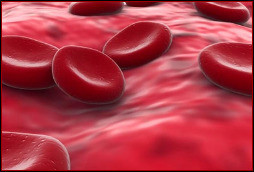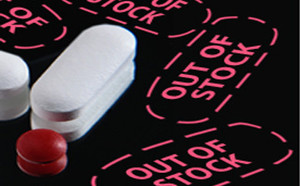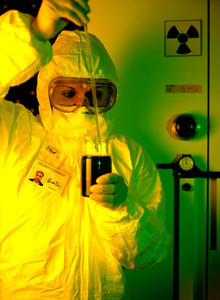Since the enactment of Hatch-Waxman Act in 1984, use of generics has grown substantially in the US. Generics now account for nearly nine out of 10 prescriptions and are considered a cost-containment solution for escalating healthcare expenditures [1]. However, several factors may influence the use of generics including, but not limited to, the perception of the safety and effectiveness of these products [2]. The US Food and Drug Administration’s (FDA) standard of bioequivalence requires similar pharmacokinetic (PK) profiles of generic versus reference drug products with the assumption of similar pharmacodynamic (PD) effect. However, several instances related to generics substitution and treatment failures have led to concern particularly for drugs with narrow therapeutic indices and in therapeutic areas with severe effectiveness and safety outcomes.

One clinical setting representative of this situation is anticoagulation. Some initial studies found that converting from brand-name to generic warfarin was associated with increased risk of international normalized ratio values outside of therapeutic range, as well as increased thrombotic events and haemorrhagic events [3-5], although additional studies showed no differences [6, 7]. This led to the assumption of failures of bioequivalence testing for generics and broad coverage in the lay media. Thus, these few instances of bioequivalent failure in single studies greatly influenced patient and prescriber perceptions of generics. As the market for newer direct-acting oral anticoagulants (DOACs) matures, the first expected generic version of dabigatran is expected as soon as 2021. While DOACs have less concerns for therapeutic monitoring and more predictable PK than warfarin, they still have relatively narrow therapeutic indices for severe bleeding outcomes and, in the case of dabigatran, its low solubility complex formulation also introduces a component of complexity by which generic bioequivalence could be complicated.
Understanding the effectiveness and safety of generic DOACs is important from both a clinical and economic perspective. For patients and prescribers, selection of a safe and effective medication with cost advantages is ideal. From a societal and healthcare payer, i.e. health insurance, perspective, there are tremendous economic benefits associated with utilizing generics and ensuring their quality. In line with the research and scientific priorities of the FDA’s Generic Drug User Fee Act II (GDUFA II) [8], much research is focused on developing scientific frameworks to verify bioequivalence of generics and enhance the regulatory actions of FDA. One such strategy is using modelling and simulation approaches including estimation of PK/PD parameters of generics based on formulation variability. As a way to predict the clinical and economic impact of this variability, Wang et al. innovatively incorporated these approaches in cost-effectiveness analysis before generics entry that may provide patients, prescribers, and payers additional evidence to make informed formulary decision [9].
In order to study this, Wang et al. carried out a cost-effectiveness analysis comparing brand-name dabigatran to hypothetical generic dabigatran with both ‘lower-than-brand’ systemic exposure and ‘higher-than-brand’ systemic exposure [9]. PK/PD parameters were estimated separately by colleagues and used to alter event rates for strokes and bleeds in the cost-effectiveness simulations. Overall, these PK/PD curves can be described to be relatively flat for stroke events but with drastic increases in bleeding risk with increased bioavailability. Two comparisons were made in the cost-effective analyses constraining PK/PD parameters within the range of bioequivalence. First, two hypothetical generic dabigatran with the most extreme systemic exposure [F = 0.8; F = 1.25], which represents the limits of bioequivalence testing for generics in the US, were evaluated. The second analysis evaluated two generics with less extreme systemic exposure [F = 0.9; F = 1.125] compared with brand-name dabigatran. The authors tracked patient clinical outcomes until death and accounted for stroke, major and minor bleeding events, myocardial infarction and death outcomes. At each stage, costs associated with treatment and costs associated with safety or effectiveness outcomes were calculated.
The analysis showed that generic dabigatran with lower-than-brand-name systemic exposure [F = 0.8 and F = 0.9] were dominant treatment strategies with the highest quality adjusted life years (QALY) and lowest costs. After excluding these dominant strategies, the analyses showed that brand-name dabigatran [F=1] was actually more cost-effective when compared to generic dabigatran with higher-than-brand-name systemic exposure [F = 1.25], with an incremental cost‐effectiveness ratio value of US$36,483/QALY. In the second comparison with the less extreme case, generic dabigatran [F = 1.125] was cost-effective compared to brand-name dabigatran [F = 1] but with an incremental cost-effectiveness ratio value of US$287,200/QALY. This latter comparison may be well above the standard of US$50 − US$150,000 per QALY, which is often assumed in many cost-effectiveness analyses. These results were primarily driven by excessive bleeding events when bioavailability was increased, as well as the cost of the brand-name product compared to the generic version.
This analysis is a novel approach in projecting the cost-effectiveness of future generics that may have concerns related to their complexity in formulation or serious outcomes. This analysis has shown that along the spectrum of bioequivalence allowed by FDA, cost-effectiveness is not necessarily straightforward; with higher bioavailability leading to an excess of negative safety events. The combined approach offers several strategies to mitigate concerns for such drugs. For one, it can lead to increased regulatory scrutiny of generics to better ensure bioequivalence standards. This could reduce the threshold for bioequivalence, require additional testing, or other strategies that promote similarity between brand-name and generic drug products. This information could also be used to promote brand-name products among payers while, given the sensitivity of these analyses to medication price, being used to estimate a ‘value-based price’ that maximizes healthcare savings while still protecting patients. Regardless, multidisciplinary approaches such as these are needed to evaluate complex generics and ensure access and safety of the US pharmaceutical supply [10, 11]. Future research should expand these approaches to other complex generics, such as complex formulations, inhalations, drug-device combinations, biologicals and transdermal systems.
Related articles
Use of biosimilar infliximab gives savings for patients
Comparison of economic loss between generics and patented drugs in Indonesia
References
1. Generic Pharmaceutical Association. Generic drugs continue to deliver billions in savings to the U.S. healthcare system, new report finds. Cision PR Newsire. 2016 Oct 19.
2. Howard JN, Harris I, Frank G, Kiptanui Z, Qian J, Hansen R. Influencers of generic drug utilization: a systematic review. Res Social Adm Pharm. 2018;14(7):619-27.
3. Halkin H, Shapiro J, Kurnik D, Loebstein R, Shalev V, Kokia E. Increased warfarin doses and decreased international normalized ratio response after nationwide generic switching. Clin Pharmacol Ther. 2003;74(3):215-21.
4. Richton-Hewett S, Foster E, Apstein CS. Medical and economic consequences of a blinded oral anticoagulant brand change at a municipal hospital. Arch Intern Med. 1988;148(4):806-8.
5. Ghate SR, Biskupiak JE, Ye X, et al. Hemorrhagic and thrombotic events associated with generic substitution of warfarin in patients with atrial fibrillation: a retrospective analysis. Ann Pharmacother. 2011;45(6):701-12.
6. Dentali F, Donadini MP, Clark N, et al. Brand name versus generic warfarin: a systematic review of the literature. Pharmacotherapy. 2011;31(4):386-93.
7. Pereira JA, Holbrook AM, Dolovich L, et al. Are brand-name and generic warfarin interchangeable? Multiple n-of-1 randomized, crossover trials. Ann Pharmacother. 2005;39(7-8):1188-93.
8. U.S. Food and Drug Administration. Generic Drug User Fee Amendments (GDUFA) science and research priority initiatives for fiscal year 2020 [homepage on the Internet]. [cited 2020 Jul 8]. Available from: www.fda.gov/media/132370/download
9. Wang CY, Pham PN, Kim S, et al. Predicting cost-effectiveness of generic vs. brand dabigatran using pharmacometric estimates among patients with atrial fibrillation in the United States. Clin Transl Sci. 2020;13(2):352-61.
10. Brown J, Henriksen C, Vozmediano V, Schmidt S. Real-world data approaches for early detection of potential safety and effectiveness signals for generic substitution: a metoprolol extended release case study. Clin Pharmacol. 2019;59(9):1275-84.
11. Schmidt S, Kim S, Vozmediano V, et al. Pharmacometrics, physiologically based pharmacokinetics, quantitative systems pharmacology-what's next?-Joining mechanistic and epidemiological approaches. CPT Pharmacometrics Syst Pharmacol. 2019;8(6):352-5.
Permission granted to reproduce for personal and non-commercial use only. All other reproduction, copy or reprinting of all or part of any ‘Content’ found on this website is strictly prohibited without the prior consent of the publisher. Contact the publisher to obtain permission before redistributing.
Copyright – Unless otherwise stated all contents of this website are © 2020 Pro Pharma Communications International. All Rights Reserved.








 0
0











Post your comment